Communications Attack

What is the most common type of cyber attack ?
Phishing attacks are the most common type of cyber attack, involving tricking individuals into providing sensitive information by posing as a trustworthy entity. They can be carried out through email, social media, or phone calls and involve spoofing, luring, and stealing. Examples include email phishing, spear phishing targeting specific individuals, and whaling targeting high-profile individuals. To prevent phishing attacks, individuals and organizations should educate themselves on identifying and reporting phishing attempts, implement multi-factor authentication, keep software and antivirus programs up-to-date, and use strong and unique passwords for each account.

What are the most common types of telecommunications fraud ?
Telecommunications fraud is a serious issue that affects millions of people worldwide. It involves using technology to deceive individuals or organizations for financial gain. Here are some of the most common types of telecommunications fraud: 1. Phishing Attacks: In this type of attack, cybercriminals send fraudulent emails or messages that appear to be from a legitimate source, such as a bank or a government agency. The message typically asks the recipient to click on a link or provide sensitive information, such as login credentials or credit card details. Once the victim provides the requested information, the attacker can use it to access their accounts and steal money or personal data. 2. Vishing Attacks: In this type of attack, cybercriminals use automated phone calls or live callers to trick victims into providing sensitive information over the phone. The attacker may pretend to be from a legitimate organization, such as a bank or a government agency, and ask for personal information or payment for a fake service. 3. Smishing Attacks: Smishing, or SMS phishing, is a relatively new form of telecommunications fraud that involves sending fraudulent text messages to victims' mobile devices. These messages often claim to be from a legitimate source, such as a bank or a government agency, and ask for sensitive information or payment for a fake service. Unlike traditional phishing attacks, which rely on email, smishing attacks use SMS messages to reach victims directly on their mobile devices.

What are the most common types of network attacks and how can they be prevented ?
The article outlines the most common types of network attacks and their prevention measures. These include phishing, malware, DoS/DDoS, MitM, SQL injection, XSS, insecure network services, insider threats, password attacks, and wireless network attacks. For each type of attack, the text provides a brief explanation followed by specific prevention strategies. The conclusion emphasizes the importance of a layered security approach that combines education, monitoring, and rapid response to mitigate risks and protect assets.
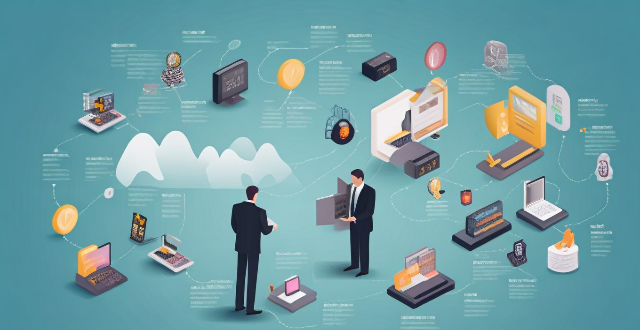
What impact has 5G technology had on the telecommunications industry ?
The advent of 5G technology has revolutionized the telecommunications industry, offering faster speeds, lower latency, and increased capacity. Key impacts include enhanced mobile broadband, ultra-reliable low-latency communications, and massive Internet of Things connectivity. These advancements have led to changes in network infrastructure, service innovation, economic growth, and social development. However, challenges such as coverage limitations, compatibility issues, spectrum allocation, and security concerns need to be addressed. The full potential of 5G is yet to be realized but holds immense promise for positive change across various sectors.

How do I recognize the signs of a heart attack and what should I do ?
Recognizing the signs of a heart attack is crucial for immediate and effective response. Symptoms include chest pain or discomfort, pain in other areas such as arms or jaw, shortness of breath, nausea, lightheadedness, cold sweat, and fatigue. If symptoms are present, call emergency services immediately, do not drive yourself, consider taking aspirin if not allergic, find a comfortable position, loosen tight clothing, monitor symptoms, and follow professional advice upon arrival of help. Acting quickly can significantly improve recovery chances and survival rates.

Can I report telecommunications fraud to any authority ?
Telecommunications fraud is a serious issue that can have significant financial and personal consequences for victims. It is important to know where and how to report such incidents to ensure that appropriate action is taken. In this article, we will explore the various authorities to which you can report telecommunications fraud. The Federal Communications Commission (FCC) is the primary agency responsible for regulating interstate and international communications by radio, television, wire, satellite, and cable in the United States. The FBI is responsible for investigating federal crimes, including telecommunications fraud. Each state has an attorney general who is responsible for protecting consumers within their jurisdiction. Local law enforcement agencies also have the authority to investigate complaints and work with other agencies to pursue legal action against those responsible for fraudulent activities.

How do communication satellites impact the field of telecommunications ?
Communication satellites have revolutionized telecommunications by providing global connectivity, increasing bandwidth, and improving reliability. They allow for communication across vast distances, connecting remote areas with the rest of the world and providing access to telecom services in regions lacking terrestrial infrastructure. Modern satellite systems offer high data rates for faster internet speeds and better voice/video transmissions, supporting multiple services like voice, data, and video conferencing. Satellites also enhance reliability and redundancy as critical backups during disasters and emergencies, creating diverse communication pathways. With rapid deployment capabilities, satellites are ideal for temporary situations like military operations or emergency responses and enable mobile applications. Economically, advancing technology reduces costs, opens new markets, and fosters job creation. Technological advancements include improved modulation techniques and antenna designs for better performance. Environmental considerations involve space debris mitigation and energy efficiency. Overall, satellites significantly impact telecommunications by extending reach, increasing capacity, ensuring reliability, offering flexibility, driving economic growth, and fostering technological advancements while considering environmental implications.

How can I educate my family about telecommunications fraud ?
Telecommunications fraud is a serious issue that can have devastating consequences for individuals and families. To protect themselves from becoming victims, it's important to educate loved ones about the risks and ways to avoid them. Here are some steps to follow: Understanding Telecommunications Fraud: Make sure everyone understands what telecommunications fraud entails and how it works. This includes phishing scams, vishing attacks, smishing schemes, and tech support scams. Recognizing Red Flags: Educate your family on the common signs of telecommunications fraud, such as urgency, unexpected requests, too good to be true offers, threats or intimidation. Prevention Tips: Share prevention tips with your family to help them avoid falling prey to scams. These include staying informed, verifying sources, securing devices, using anti-fraud tools, being cautious online, limiting personal exposure, and reporting suspected fraud. Action Plan: Create an action plan for your family in case they encounter a potential fraud attempt. This includes stopping and thinking before acting impulsively, consulting family members for a second opinion, contacting authorities if convinced it's a scam, and documenting everything related to the suspected fraud for future reference.

What are the risks associated with using public Wi-Fi networks ?
Using public Wi-Fi networks can expose you to various risks and vulnerabilities, including Man-in-the-Middle attacks, unencrypted data transmission, malware distribution, phishing scams, insufficient security measures, lack of privacy, session hijacking, and denial of service attacks. To protect yourself from these risks, it is essential to take precautions when using public Wi-Fi networks, such as using a virtual private network (VPN), avoiding sensitive activities like online banking or shopping, and keeping your device's software up-to-date with the latest security patches.

How does social engineering pose a risk to communication security ?
The Risks of Social Engineering to Communication Security discusses the dangers of social engineering, a form of manipulation that tricks people into sharing confidential information. Social engineering is a significant threat to communication security because it can infiltrate trusted environments, manipulate human emotions, be difficult to detect, use a variety of attack vectors, lead to data breaches, and lack awareness and training. To protect against social engineering attacks, organizations must implement comprehensive security awareness programs, establish strict verification procedures for sensitive requests, and create a culture of security where employees are encouraged to report suspicious activities without fear of reprimand.

What are the main threats to communication security ?
The text discusses the main threats to communication security, which include eavesdropping and unauthorized access, malware and viruses, social engineering and phishing, insider threats, and DoS attacks. It also provides mitigation strategies for each threat, such as encryption, secure networks, physical security, antivirus software, firewalls, software updates, awareness training, email filters, multi-factor authentication, access controls, monitoring and auditing, termination procedures, rate limiting, content delivery networks (CDNs), and intrusion detection systems (IDS).
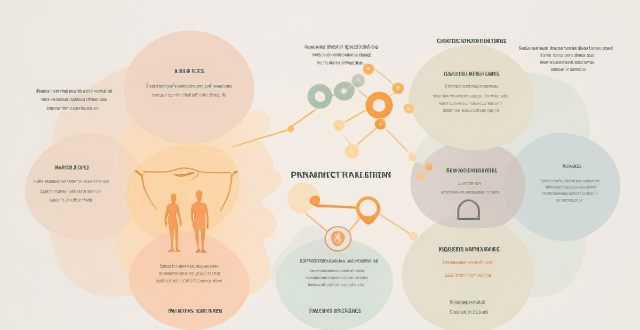
Are there any proven methods to avoid panic attacks during exams ?
The article provides a comprehensive guide on how to avoid panic attacks during exams, emphasizing the importance of preparation, healthy lifestyle habits, and coping strategies. It outlines the symptoms of panic attacks and suggests methods such as deep breathing, positive self-talk, mindfulness, and distraction to manage anxiety during exams. The article also encourages reflection post-exam and self-care activities to mitigate future panic episodes.
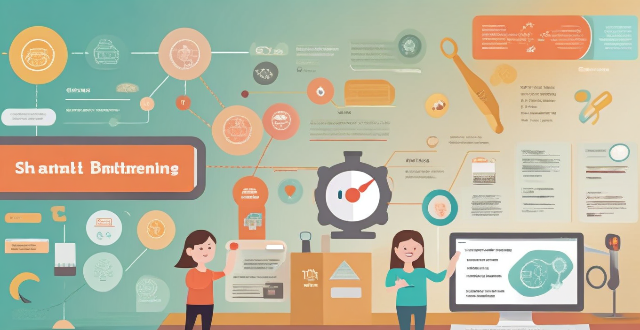
How can I train my employees to identify and avoid phishing scams ?
Phishing scams are a significant threat to both individuals and organizations, as they involve cybercriminals attempting to obtain sensitive information by posing as trustworthy entities. To protect against these attacks, it is essential to train employees in identifying and avoiding such scams. This can be achieved through various steps including educating employees about phishing, conducting simulated phishing attacks, implementing security awareness training programs, promoting open communication, and developing clear policies and procedures. By following these steps, employees will be better equipped to recognize and avoid phishing scams, significantly reducing the risk of successful attacks on an organization's networks and systems.

Is 5G network more secure than 4G ?
The question of whether 5G is more secure than 4G has been a topic of discussion among tech enthusiasts and security experts. While it's true that 5G brings many improvements over its predecessor, including faster speeds and lower latency, the question of security is complex and multifaceted. Let's dive into some key aspects to consider: ## Encryption and Authentication ### Key Points: - **Stronger Encryption**: 5G uses more advanced encryption methods compared to 4G. - **Enhanced Authentication Procedures**: 5G introduces new authentication mechanisms. #### Explanation: 5G networks employ stronger encryption standards than 4G. For instance, it uses algorithms like AES-256 for confidentiality, which is considered very secure. Moreover, 5G includes enhanced authentication procedures such as network function protection and improved identity privacy features. These enhancements make it harder for attackers to intercept or spoof user data. ## Network Slicing and Isolation ### Key Points: - **Network Slicing**: Allows multiple virtual networks on a shared physical infrastructure. - **Improved Isolation**: Helps in containing potential security breaches. #### Explanation: One of the innovative features of 5G is network slicing, which enables operators to create multiple virtual networks tailored for different services or customers. This can improve security by isolating sensitive communications from general traffic, reducing the risk of cross-contamination if one slice gets compromised. ## IoT and Device Density ### Key Points: - **Increased Connectivity**: 5G is designed to support a much higher number of devices. - **Potential Vulnerabilities**: More connected devices could mean more entry points for attacks. #### Explanation: With the rise of IoT (Internet of Things), 5G is expected to connect many more devices than 4G. While this opens up opportunities for smart cities, autonomous vehicles, etc., it also increases the potential attack surface. Each device could be a vulnerability that hackers might exploit. ## Security Standards and Regulations ### Key Points: - **Evolving Standards**: 5G security standards are still evolving. - **International Cooperation**: Global cooperation is essential for setting uniform security regulations. #### Explanation: As with any new technology, the security standards for 5G are still being developed and refined. There's an ongoing effort from international bodies to ensure that 5G networks worldwide adhere to stringent security guidelines. However, the effectiveness of these measures will depend on how consistently they are implemented and enforced across different countries and providers. ## Conclusion In conclusion, while 5G brings several improvements that can enhance security—such as stronger encryption and better authentication mechanisms—it also introduces new challenges due to increased connectivity and the need for global cooperation on security standards. Therefore, it's not straightforward to declare that 5G is inherently more secure than 4G without considering various factors and ongoing developments in both technologies.

How do firewalls contribute to communication security ?
Firewalls play a crucial role in ensuring communication security by acting as a barrier between trusted and untrusted networks. They contribute to communication security through packet filtering, stateful inspection, application-level gateways, content filtering, network address translation (NAT), VPN support, and integration with Intrusion Prevention Systems (IPS). These features help in preventing unauthorized access, protecting against malicious traffic, scanning for viruses, filtering specific types of data, hiding internal network structures, ensuring secure remote access, and detecting potential attacks or policy violations in real-time. Overall, firewalls provide multiple layers of protection, effectively managing and controlling network traffic to secure communications and protect against various types of cyber threats.
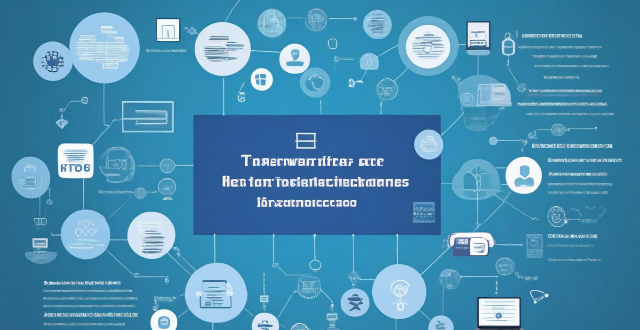
What are the risks of connecting to a public Wi-Fi network ?
Connecting to a public Wi-Fi network can expose your device and personal information to various risks, including man-in-the-middle attacks, malware distribution, unauthorized access to your device, snooping and data theft, and social engineering attacks. To mitigate these risks, it is recommended to use a Virtual Private Network (VPN) to encrypt your internet traffic, keep your operating system and antivirus software up-to-date, enable your firewall, use websites with HTTPS encryption, verify the authenticity of the Wi-Fi network before connecting, and be cautious about which websites you visit and what information you enter while connected to public Wi-Fi.

Can data encryption prevent data breaches and cyber attacks ?
Data encryption is a crucial security measure that can significantly reduce the risk of data breaches and cyber attacks by converting plain text into an unreadable format. However, it does not completely eliminate the risk of data breaches and cyber attacks. Encryption works through complex algorithms to scramble data so that it appears as random characters, requiring a secret key (or password) to decrypt the data back into its original form. There are two main types of encryption: symmetric and asymmetric. While encryption offers benefits such as confidentiality, integrity, authentication, and non-repudiation, it also has limitations including key management challenges, performance overhead, compatibility issues, human error, and advanced persistent threats (APTs). Therefore, organizations should implement other security measures such as firewalls, intrusion detection systems, regular security audits, and employee training programs to minimize the risk of cyber threats.

Can solar flares cause communication interference ?
Solar flares, intense bursts of radiation from the sun's atmosphere, can disrupt communication systems on Earth. This includes shortwave radio signals, satellite communications, and other terrestrial networks. The effects range from signal quality disruption and frequency deviation to satellite link disruptions, GPS accuracy issues, and even physical damage to satellite hardware. While these impacts vary, organizations involved in critical communication operations must be aware of the risks and implement mitigation strategies to minimize potential disruptions.

How do DNS resolution times influence network optimization ?
The speed at which DNS resolution occurs can have a significant impact on network performance and optimization. Slow DNS resolution times can cause delays in the start of network communications, while fast DNS resolution times can significantly improve network performance. Strategies for optimizing DNS resolution times include using a reliable DNS server, implementing caching, and using a CDN.
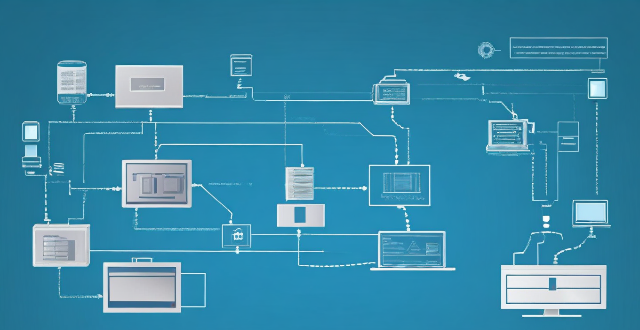
What is the role of firewalls in network security protection ?
Firewalls are crucial for network security protection, acting as a barrier between trusted and untrusted networks to prevent unauthorized access and block malicious traffic. They monitor network activity for potential threats, with various types including packet-filtering, stateful inspection, application-level, and next-generation firewalls. Firewalls offer benefits such as access control, threat prevention, visibility and auditing, and compliance enforcement. Best practices for deploying firewalls include implementing a multi-layered defense strategy, regularly updating firewall rules and policies, monitoring logs and alerts, conducting regular penetration testing, and training staff on firewall management and maintenance.
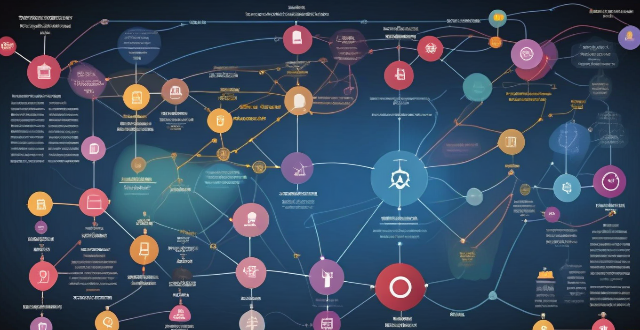
What is the role of frequency bands in wireless communication standards ?
In wireless communication, frequency bands dictate signal propagation, spectrum allocation, and interference management. These bands are critical for establishing reliable connections in technologies like Wi-Fi, Bluetooth, cellular networks, and satellite communications. The choice of band influences the range, data rate, and potential interference of a wireless system. Spectrum scarcity and regulatory compliance present challenges that drive innovations in spectrum sharing and cognitive radio technologies. Overall, the role of frequency bands is crucial for efficient and effective wireless communication standards.
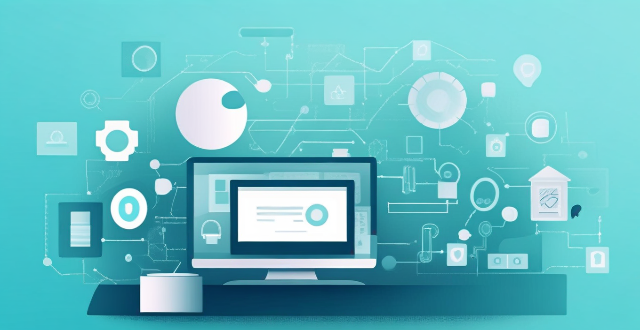
How does digital identity impact personal privacy and security ?
The article discusses the impact of digital identity on personal privacy and security. It highlights the risks associated with data collection, cybercrime, surveillance, phishing attacks, social engineering attacks, and ransomware attacks. The article emphasizes the importance of protecting digital identity by using strong passwords, enabling two-factor authentication, and being cautious when sharing sensitive information online.

What is 5G technology and how does it differ from 4G ?
5G technology, the fifth generation of wireless networks, is set to revolutionize mobile networking by offering faster speeds, lower latency, and increased capacity compared to 4G. Key differences between 5G and 4G include improvements in speed (up to 20 Gbps for 5G vs. 10-30 Mbps for 4G), latency (as low as 1 millisecond for 5G vs. 50 milliseconds for 4G), and network capacity (supporting up to a million devices per square kilometer for 5G). 5G also utilizes advanced network architecture and a wider bandwidth, incorporating both sub-6 GHz and millimeter-wave spectrum. The advantages of 5G over 4G include enhanced mobile broadband, ultra-reliable low latency communications, and massive machine type communications, making it suitable for applications like remote surgery, autonomous vehicles, and smart cities. The potential impact of 5G spans various sectors such as industrial automation, healthcare, transportation, entertainment, and smart city development, promising to connect people and machines in unprecedented ways and open doors to numerous opportunities and advancements.

Are there any potential drawbacks or challenges with implementing network slicing ?
Network slicing is a promising technology that allows multiple virtual networks to coexist on a shared physical infrastructure. It enables operators to provide tailored network services for different use cases, such as enhanced mobile broadband (eMBB), ultra-reliable low-latency communications (URLLC), and massive machine-type communications (mMTC). However, there are potential drawbacks and challenges associated with implementing network slicing, including the complexity of management and orchestration, significant infrastructure investment required, standardization and interoperability issues, skill gap within organizations, and regulatory and legal aspects to consider.
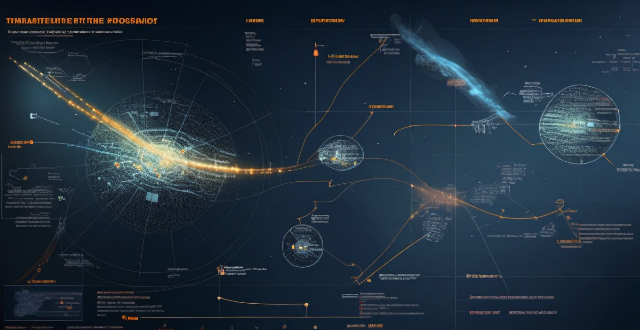
How do communication satellites contribute to disaster response and relief efforts ?
Communication satellites are vital for disaster response and relief efforts, providing real-time information, surveillance, coordination, emergency communications, and aiding search and rescue operations. They enable quick decision-making and efficient resource allocation during emergencies.

Are there any international laws or treaties related to privacy rights ?
The text discusses several international laws and treaties related to privacy rights, including the European Convention on Human Rights (ECHR), the General Data Protection Regulation (GDPR), the Charter of Fundamental Rights of the European Union (CFR), and the International Covenant on Civil and Political Rights (ICCPR). These documents provide individuals with protection against unlawful interference with their private lives, homes, and communications.

How do communication satellites support military operations and intelligence gathering ?
This text discusses how communication satellites support military operations and intelligence gathering, highlighting their role in secure communication channels, wide area coverage, high-speed data transmission, surveillance and reconnaissance, coordination and command, resilience and redundancy.

How can we measure the success of a safety drill ?
The article discusses the importance of evaluating safety drills to improve emergency response and preparedness. Key factors to consider include compliance with safety procedures, participant engagement, effectiveness of communications, availability and functionality of equipment and resources, and overall performance. By measuring the success of a safety drill, organizations can identify areas for improvement and ensure that their employees are well-prepared to handle emergency situations effectively.